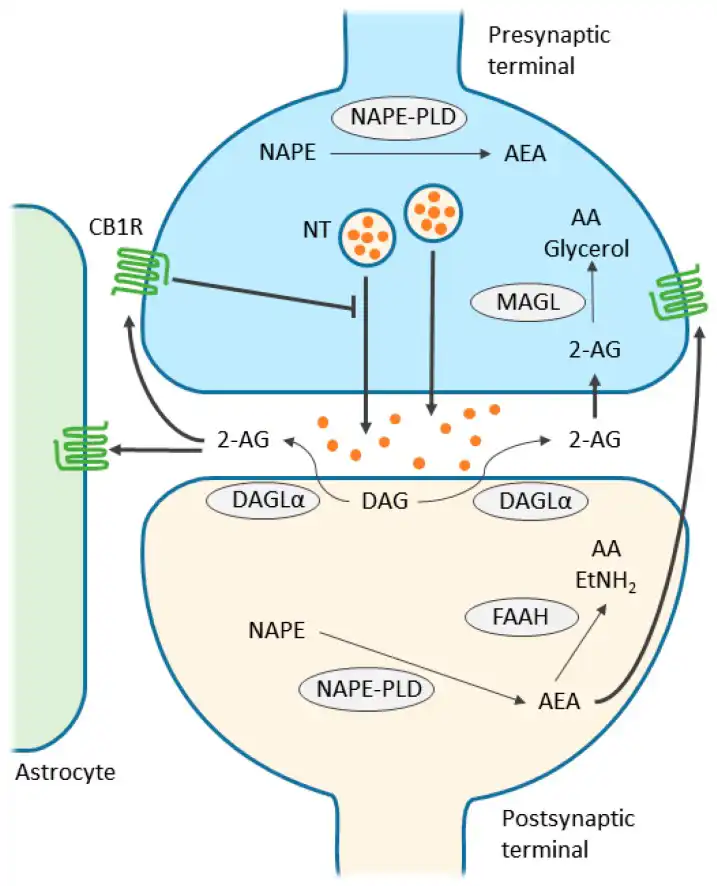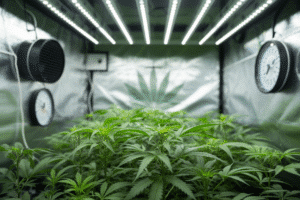- Latest research on CB9 properties & therapeutic applications
Understanding CB9: Its Effects, Benefits, and Risks

Contents
Contents
Introduction to CB9
CB9, a lesser-known cannabinoid, is beginning to gain attention in cannabis research for its potential therapeutic effects. Unlike the widely researched CBD (non-psychoactive) and THC (strongly psychoactive), CB9 is thought to possess unique properties that could offer a middle ground in its interaction with the body’s endocannabinoid system. Although studies on CB9 are limited, early research suggests it may have mild psychoactive effects and potential benefits for pain management and inflammation. As scientists continue exploring cannabinoids like CB9, its distinct properties could unlock new opportunities for both medical and recreational cannabis use.
In this article, we’ll dive into what is known about CB9, its mechanisms, and why it’s gaining interest in the cannabis community.
What is CB9?
CB9 is a synthetic cannabinoid designed to interact with the body’s endocannabinoid system similarly to natural cannabinoids like CBD and THC. As a synthetic compound, CB9 does not occur naturally in cannabis plants but is created in labs. It is believed to bind to CB1 and CB2 receptors, which regulate key physiological processes such as pain, mood, and immune function.
CB9 is gaining attention for its mild psychoactive effects, thought to be less intense than THC but more noticeable than CBD, making it potentially appealing for both recreational and therapeutic use. However, research on CB9 is in its early stages, and its long-term effects, safety profile, and medical applications remain largely unknown. Early interest in CB9 focuses on its possible benefits in pain relief, anti-inflammatory responses, and the treatment of certain neurological disorders, though more studies are needed to understand its full potential and safety.
Note: The legal status and regulation of synthetic cannabinoids like CB9 can vary across regions, so caution is advised when considering its use.
Chemical Structure and Mechanism of CB9
CB9, as a synthetic cannabinoid, features a chemical structure specifically designed to interact with the body’s endocannabinoid system differently from natural cannabinoids like THC and CBD. Synthetic cannabinoids are often created by modifying certain parts of the molecule, such as the alkyl chain, to enhance binding affinity to CB1 and CB2 receptors, the primary receptors in the endocannabinoid system.

Simplified scheme representing endocannabinoid retrograde signaling mediated synaptic transmission.
Source: National Library of Medicine
CB9’s structure likely includes a longer or modified alkyl chain compared to THC, which may increase its lipophilicity (fat solubility) and allow it to cross the blood-brain barrier more efficiently. This can result in more intense or unique interactions with cannabinoid receptors. The interaction with CB1 receptors in the brain likely contributes to its mild psychoactive effects, although less potent than THC, while its potential action on CB2 receptors could explain possible anti-inflammatory or immunomodulatory properties.
To better understand this, imagine the receptors as locks and CB9 as a key. Synthetic cannabinoids like CB9 are engineered to “fit” these locks differently, potentially leading to altered effects compared to natural cannabinoids. The design of these synthetic compounds is what makes them both intriguing for medical research and concerning from a regulatory and safety perspective.
As research on CB9 progresses, scientists will need to investigate how its unique structure influences both its therapeutic potential and risks. For now, the lack of comprehensive data on CB9 highlights the need for caution and further study to fully understand its effects.
Effects of CB9
CB9 is a synthetic cannabinoid that interacts with the endocannabinoid system (ECS), particularly the CB1 and CB2 receptors. While research is still limited, early studies and anecdotal evidence suggest that CB9 may produce mild psychoactive effects, potentially making users feel relaxed or slightly euphoric. Its interaction with CB1 receptors, which are primarily located in the brain and nervous system, suggests it could have similar effects to other cannabinoids, although its potency and duration remain unclear.
CB9’s potential therapeutic applications are of particular interest. Due to its interaction with CB2 receptors—which play a role in immune response—it may have anti-inflammatory and pain-relieving properties. These interactions could make CB9 a candidate for managing conditions like arthritis or chronic pain. However, given the preliminary nature of current research, much more is needed to confirm these benefits and fully understand its side effects and risks.
As with many synthetic cannabinoids, users should exercise caution when trying CB9, as its long-term effects, safety profile, and overall efficacy remain largely unexplored.
Cannabinoids compared
CB9 stands out among cannabinoids for its synthetic origin and unique interaction with the endocannabinoid system. While THC is renowned for its strong psychoactive effects, CB9’s potency may be subtler, potentially offering mild psychoactivity similar to CBD but with synthetic precision. Compared to THCP and THCO, both known for their extreme potency, CB9’s effects are still being explored, with a potential focus on therapeutic applications like pain and inflammation relief.
Unlike H4CBD, which is a hydrogenated form of CBD offering enhanced stability, CB9’s effects remain largely unknown, necessitating further research to understand its full therapeutic potential.
Here’s a table comparing THC, THCP, THCO, THC-JD, H4CBD, CB9, and CBD across key factors like potency, effects, legal status, and therapeutic potential:
| Compound | Potency | Psychoactive Effects | Legal Status (General) | Therapeutic Potential |
|---|---|---|---|---|
| THC | Moderate | Euphoria, relaxation, altered perception | Legal in some regions, restricted in others | Pain relief, anti-nausea, anxiety reduction |
| THCP | Very High (up to 33x THC) | Strong euphoria, deep relaxation, sedation | Largely unregulated or restricted | Possible applications for pain, inflammation, and sleep |
| THCO | High | Intense psychoactive effects, slower onset | Legal grey area in many places | May offer potent effects for pain, but more research needed |
| THC-JD | Very High | Strong euphoria, sedation | Largely unregulated or restricted | Potential for strong analgesic and anti-inflammatory effects |
| H4CBD | Mild (more potent than CBD) | Minimal to none, non-psychoactive | Legal in most places (CBD derivative) | Anti-inflammatory, pain relief, neuroprotective properties |
| CB9 | Unknown, potential mild | Mild euphoria, possibly therapeutic | Mostly unregulated, early-stage research | Potential for anti-inflammatory and pain-relief applications |
| CBD | Low (non-psychoactive) | Non-psychoactive, calming | Legal in many regions | Anxiety, pain, inflammation, epilepsy, neuroprotection |
Notes:
- THC (Delta-9 Tetrahydrocannabinol): The most well-known cannabinoid, responsible for the “high” in cannabis.
- THCP (Tetrahydrocannabiphorol): Far more potent than THC, with similar effects but potentially stronger and longer-lasting.
- THCO (THC-O-Acetate): A synthetic compound, often described as a more potent version of THC with a delayed onset.
- THC-JD: Another synthetic cannabinoid known for its high potency and powerful effects on relaxation and euphoria.
- H4CBD: A hydrogenated version of CBD that is stronger in some therapeutic properties, but non-psychoactive.
- CB9: A lesser-known synthetic cannabinoid that may offer mild psychoactive effects and therapeutic applications, but is still under research.
- CBD (Cannabidiol): A non-psychoactive cannabinoid known for its wide-ranging therapeutic benefits, such as reducing anxiety and inflammation.
This table provides a high-level overview of these cannabinoids, highlighting their differences in potency, effects, and legal status.
Potential Medical Applications of CB9
CB9, a synthetic cannabinoid, has shown promise in early studies for potential medical applications, though much more research is required to validate these findings. Its interaction with the endocannabinoid system (ECS), particularly with the CB1 and CB2 receptors, suggests a range of therapeutic possibilities.
- Pain Management: CB9’s ability to bind to CB1 receptors may help in modulating pain signals. Like other cannabinoids, it could be useful for managing chronic pain, especially neuropathic pain that is resistant to conventional treatments.
- Anti-inflammatory Effects: CB9’s influence on CB2 receptors in immune cells suggests it could have anti-inflammatory effects. This makes it a potential candidate for treating conditions like arthritis and other autoimmune or inflammatory diseases.
- Neuroprotection: There is growing interest in CB9’s neuroprotective potential. It might help manage neurological disorders such as epilepsy, multiple sclerosis, and possibly neurodegenerative diseases like Parkinson’s, though this requires further investigation.
Despite these promising areas, it is important to highlight that clinical trials and safety studies are critical before any therapeutic uses can be confirmed.
Safety Considerations and Potential Risks
CB9, as a synthetic cannabinoid, presents several safety concerns due to its novel interaction with the body’s endocannabinoid system. Since research on CB9 is still limited, its full range of side effects remains largely unknown.
- Unknown Side Effects: While similar synthetic cannabinoids have been linked to anxiety, dizziness, and nausea, the effects of CB9 are not yet fully understood. Caution is advised due to its potential for unpredictable reactions.
- Potency and Risk of Overconsumption: Synthetic cannabinoids are often more potent than their natural counterparts. CB9 could pose a higher risk of overconsumption, leading to side effects such as paranoia, cognitive impairment, and cardiovascular issues.
- Regulatory and Quality Issues: Since CB9 is not widely regulated, product purity and consistency are concerns. Without strict regulation, products may be contaminated or mislabeled, increasing the risk of harmful side effects. Consumers should avoid unregulated products and consult a healthcare professional before use.
Further research is essential to determine the safety profile and long-term risks of CB9. Always approach synthetic cannabinoids with caution.
Proper Usage and Dosing of CB9
Microdosing involves taking very small amounts of a substance, often 1/10th to 1/20th of a standard dose. When microdosing CB9, it’s advisable to keep a detailed log of usage, including dosage, effects, and any side effects experienced. This can help in understanding individual tolerance and reactions.
Given the unknowns surrounding CB9, it’s recommended to have a trusted person present when trying it for the first time who can seek help if needed. Users should also be aware that even low doses of synthetic cannabinoids may carry long-term risks that are currently unknown. It’s crucial to disclose CB9 use to healthcare providers to ensure proper medical care and avoid potential drug interactions.
FAQs on CB9
1. What is CB9?
CB9 is a synthetic cannabinoid designed to mimic the effects of natural cannabinoids like THC and CBD. Unlike naturally occurring cannabinoids, it is chemically engineered and interacts with the body’s endocannabinoid system, particularly through CB1 and CB2 receptors.
2. How does CB9 work in the body?
CB9 primarily binds to the body’s CB1 and CB2 receptors. These receptors are involved in regulating mood, pain perception, immune function, and other physiological processes. CB9’s synthetic nature might allow for different, potentially stronger, effects compared to natural cannabinoids.
3. Is CB9 psychoactive?
Yes, CB9 is believed to be mildly psychoactive, although it is less intense than THC. However, due to its synthetic nature, the exact level of psychoactivity can vary based on formulation and dosage.
4. Is CB9 legal?
The legal status of CB9 varies significantly depending on the jurisdiction. In many regions, synthetic cannabinoids like CB9 may fall into legal grey areas or be outright banned. Always check local laws before purchasing or using CB9.
5. Are there known side effects of CB9?
Because research on CB9 is still limited, its full safety profile is not known. However, side effects common to synthetic cannabinoids include anxiety, paranoia, rapid heart rate, and nausea. Long-term effects have not been sufficiently studied.
6. Can CB9 be used for medical purposes?
While there is early interest in CB9 for potential therapeutic applications such as pain management and inflammation control, it has not undergone the rigorous testing needed for medical approval. More clinical trials and research are required to confirm any medical benefits.
7. How should CB9 be dosed?
Given the lack of established guidelines, it’s recommended to start with a very low dose (often referred to as microdosing) and gradually increase based on your body’s response. Always consult a healthcare provider before trying CB9.
8. Why are synthetic cannabinoids like CB9 created?
Synthetic cannabinoids are often created to study their interactions with the endocannabinoid system or to develop new therapeutic options that may offer unique benefits. These synthetic compounds can be tailored to affect the body in specific ways, but this also increases the risk of unexpected or stronger side effects.
Conclusion
CB9 stands as an intriguing synthetic cannabinoid with potential applications in medical fields like pain management and inflammation reduction. Its interaction with the endocannabinoid system opens up new research avenues, but much remains unknown about its safety, efficacy, and legal status. As with all emerging cannabinoids, responsible research and regulated usage will be key to unlocking its full potential.
The future of CB9 lies in further studies that will determine its safety and potential therapeutic benefits. It’s essential for individuals to approach with caution, consult healthcare providers, and avoid unregulated products until more concrete findings are available.
This article is intended solely for educational and informational purposes. The content is based on publicly available sources and our own research and should not be considered as medical, legal, or professional advice. We do not promote, condone, or support the use of synthetic substances or any illegal activity. Always consult a qualified healthcare provider or legal professional before making any decisions related to synthetic cannabinoids like CB9 or other controlled substances. We strive for accuracy but encourage readers to independently verify any information provided here. For more details, please refer to our full disclaimer.
Stay informed about the latest developments in cannabinoid research, including new insights into compounds like CB9. Subscribe to our newsletter to receive updates on emerging trends, research findings, legal developments, and expert tips on safe and responsible usage. Join our community today and ensure you never miss an important update in the rapidly evolving world of cannabinoids!




